watering a rose garden
Hightide Plumbing
8 months ago
Featured Answer
Sort by:Oldest
Comments (32)
Kristine LeGault 8a pnw
8 months agoMoses, Pittsburgh, W. PA., zone 5/6, USA
8 months agolast modified: 8 months agoRelated Discussions
Planting a Knock Out rose in Old Rose Garden
Comments (10)It may well be too late to think of it, but if you want something lower-growing, some of the Polyanthas might be your answer for generosity of bloom and low stature. In our area, China Doll has been used and used and used because it matches those requirements. For a red, there's Mutterdag (Mother's Day) and Lady Reading. Salmon Pink Margo Koster, and all the rest of the Koster sports (do "Contains" KOSTER in a HMF search, or check Vintage's catalog). I'd use any of those guys before I'd try a Knockout -- Not because I'm a snob, but because Knockouts would be such horses, and because I don't want anything that mildews. In a more modern vein, if you want something truly low-growing, I'd use Kim Rupert's lovely 'Lauren' or 'International Herald Tribune' if I wanted poiple. For White, I might use Pope John Paul (or try the white China, 'Ducher.') For Yellow, gosh, how about Julia Child? For red, I'd really go back to Mother's Day. Jeri...See MoreNewbie with Possible(?) Rose Emergency
Comments (13)I think you'd be better off aiming for roses that need no chemical sprays, especially with small children playing in your yard, and especially if you imagine spraying and then walking into the house in the clothing you've been using for poisonous chemicals. It is possible to grow roses organically, though you have to be careful about which varieties you choose. If I had your problem, I'd mainly water and mulch well (maybe with tree bark if you can get it), while paying attention to which ones can make it under those conditions. For those that can't, then replace them with better, more disease-resistant varieties when you get around to it. When you mow now, throw the grass clippings toward your roses, and if you have any tree leaves anywhere, rake them over that way too. Fertilize next February/March with more organic "fertilizers" like alfalfa, grass clippings, tree leaves, and composted manure on top of your mulch, watering it in well. Then add more mulch on top of that. Enjoy your small children while you can! Any day now they'll be wanting to help you with the roses, and will have a great time doing your work with you. With this in mind, aim for low-thorn varieties with your eventual choices if you can. Best wishes, Mary...See MoreBottom watering trick
Comments (3)We really need rain here in Mid-Atlantic region. I checked out some of my plants in the front flowerbeds today, took some pictures and I saw where the ground is so dry, it is about 1/2 in. crack. We've had a lot of breezy days all this week and Wed. and Saturday are predicted "a few showers" but I did water my rose garden bed and the sunroom flowerbed. I will be doing the same tomorrow to those front flowerbeds. Had a nice surprize this afternoon; a neighbor on street behind me has the most beautiful hostas that she sprays with Liquid Fence every other day but some of hers really are hugh and need thining. She had told me months ago when they started coming back, I could come over and chose one. Instead of digging up hers, she went out to a garden center and picked out one called "Dream Queen" and delivered it to me for all the things I do for our community. I hand deliver to 32 houses our community newspaper twice a month and our monthly mutual newsletter. It's a volunteer job; I'm a lot younger than most of my neighbors and it gives me some forced exercise. I told her she'd made my Easter!...See MoreVisiting S.F. best nurseries and gardens, please
Comments (4)After looking at the FAQ list, I notice that one newer nursery in San Francisco is not listed, and I'd highly recommend it: Flora Grubb Nursery in the Bayview District. It combines superb mix of plants, including palms and indoor plants, a book shop with a good selection, as well as a coffee shop, and is so popular that it has become a destination for people who come just to see what's new. I would second the recommendation for the San Francisco Botanic Garden(formerly known as Strybing), and would also recommend getting down to visit the University of California at Santa Cruz Botanic Garden, as the winter blooming South African and Australian sections will be in peak bloom. The UC Berkeley Botanic Garden is also well worth a visit. For smaller sized plants that will be easier to lug home with you, do make a visit to Annie's Annuals Nursery out in Richmond, she has an amazing inventory of all kinds of plants, mostly 4 inch size. The Dry Garden Nursery here in Oakland is also always worth a visit, as an example of another nursery that has one of a kind plants from all over. If you are into California native plants, be sure to check out the Tilden Botanic Garden here in the Berkeley Hills, along with the UC Berkeley Botanic Garden, which also has an on-site gift store and small nursery....See MoreMoses, Pittsburgh, W. PA., zone 5/6, USA
8 months agolast modified: 8 months agobart bart
8 months agojudijunebugarizonazn8
8 months agoingrid_vc zone 10 San Diego County
8 months agoMoses, Pittsburgh, W. PA., zone 5/6, USA
8 months agolast modified: 8 months agoMoses, Pittsburgh, W. PA., zone 5/6, USA
8 months agolast modified: 8 months agoMoses, Pittsburgh, W. PA., zone 5/6, USA
8 months agolast modified: 8 months agojacqueline9CA
8 months agoingrid_vc zone 10 San Diego County
8 months agoMoses, Pittsburgh, W. PA., zone 5/6, USA
8 months agolast modified: 8 months agojacqueline9CA
8 months agoDDinSB (Z10b Coastal CA)
8 months agoingrid_vc zone 10 San Diego County
8 months agoMoses, Pittsburgh, W. PA., zone 5/6, USA
8 months agolast modified: 8 months agojacqueline9CA
8 months agoDDinSB (Z10b Coastal CA)
8 months agomark_roeder 4B NE Iowa
8 months agolast modified: 8 months agoingrid_vc zone 10 San Diego County
8 months agojacqueline9CA
8 months agojudijunebugarizonazn8
8 months agojudijunebugarizonazn8
8 months agojacqueline9CA
8 months agojudijunebugarizonazn8
8 months agoMoses, Pittsburgh, W. PA., zone 5/6, USA
8 months agolast modified: 8 months agojacqueline9CA
8 months agoMoses, Pittsburgh, W. PA., zone 5/6, USA
8 months agolast modified: 8 months agoEric Civault
6 months agojacqueline9CA
5 months agomd sumon
5 months ago
Related Stories

GARDENING GUIDESGreat Design Plant: Anemone Canadensis Adds Pizzazz to Water’s Edges
Plant Canadian anemone along pond, lake or stream edges for a splash of white flowers in late spring
Full Story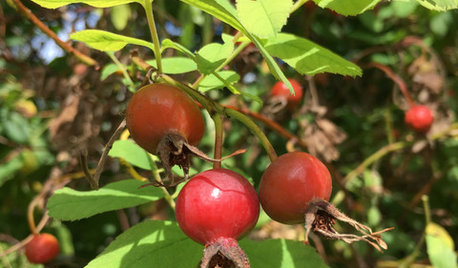
ROSESSmooth Rose’s Arching, Not-So-Thorny Canes Provide Beauty All Year
Plant Rosa blanda, native from the Great Lakes eastward, for its long bloom season, pollinator food and attractive red hips in autumn
Full Story
SPRING GARDENINGHow to Grow a Rose Garden in Pots
Everything can come up roses, even without a plot of soil in sight. This step-by-step guide to growing roses in containers shows you how
Full Story
GARDENING GUIDES6 Wonderfully Easy Roses for Any Gardener
Look like an expert even if you're just starting out, with these low-maintenance gems of the rose world
Full Story
GARDENING GUIDES6 Captivating Roses for an Alluringly Fragrant Garden
Perfume your garden with aromas from richly spicy to lightly sweet, without sacrificing an inch of color
Full Story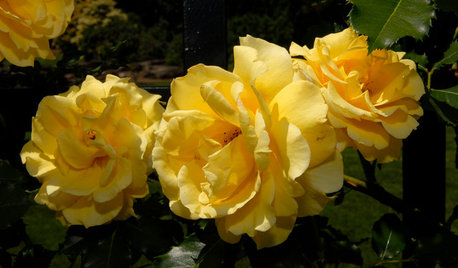
GARDENING GUIDES5 Favorite Yellow Roses for a Joyful Garden
Make 'cheery' the name of your garden game when you order your roses sunny side up
Full Story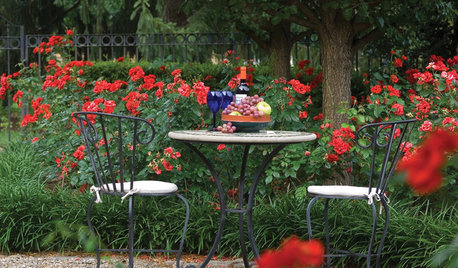
GARDENING GUIDES5 Red Roses to Stir Garden Passions
Show your devotion to color, scent and more with these regal landscape beauties
Full Story
PLANTING IDEASGreat Garden Combo: Rose + Clematis for Small-Space Impact
We all need somebody to lean on. And when a rose supports a climbing vine, the results can totally transform a small garden
Full Story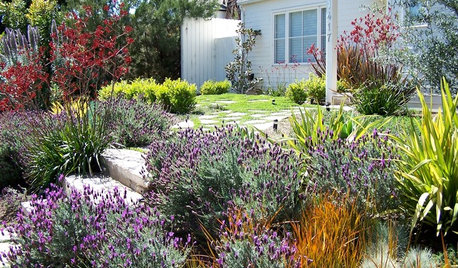
SAVING WATERGreat Plants for Lush, Low-Water Gardens
Water restrictions making your garden look washed out? Give it living color with unthirsty grasses, flowers and succulents
Full Story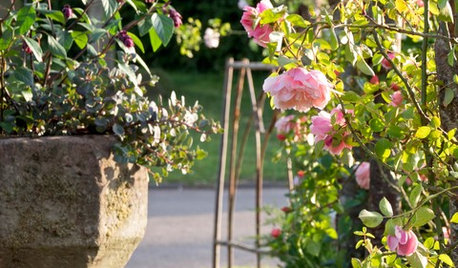
GARDENING GUIDESHow to Deadhead Roses and Other Garden Favorites
Follow this basic guide and learn how to properly deadhead roses and other flowers
Full Story


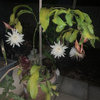

jacqueline9CA